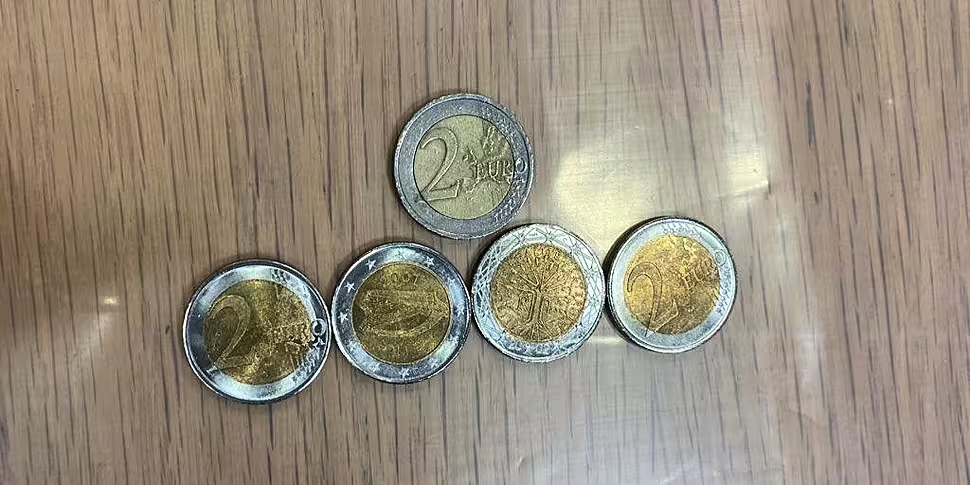Gardai have issued a warning about fake €2 coins.
Officers in Raheny seized coins with an apparent value of almost €3,000 at the end of July.
They say it's the first large seizure of counterfeit coins in this jurisdiction.
As a result of the operation, one person was charged and brought before the courts, and assets worth almost €74,000 have been frozen in bank accounts.
Gardai say fake coins have poor quality image detail, letters are often missing or feature incorrect spelling or font, and some counterfeit coins can bend.
Can you tell the real from the fake in this pic?
Gardaí in Raheny have uncovered hundreds of fake €2 coins worth an estimated €2920 and one persons been charged.
Officers are appealing to people to watch for coins with odd sizing, weight or lettering that could be fake pic.twitter.com/S8tvNeP8Gs— Mairéad Cleary (@maireadcleary7) August 3, 2022
A Garda Spokesperson says: "Following an investigation into the circulation of counterfeit €2 coins by An Garda Síochána in the Raheny Garda District a number of searches were carried out at the end of July 2022.
"During these searches, €2 coins with an apparent face value of €2,920 were seized. These coins have been examined and confirmed to be counterfeit currency. This is the first large seizure of counterfeit coins in this jurisdiction.
"As a result of this operation one person was charged and brought before the courts, at the end of July 2022 and assets to the value €73986.62 have been frozen in bank accounts."
Tips
Gardai have published this advice:
How do I Check if my Coin is a Counterfeit?
To examine suspect coins the following techniques could be used:
Visual inspection (possibly with a magnifying glass).
As compared with a known genuine coin, the suspect coin will have:
Poor quality image detail.
Different colour ring and/or core.
Edge lettering missing, incorrect spelling or font (using similar country coin).
Different sizes.
Thickness, diameter.
Different sized ring or core.
Different weight.
Hardness Test
Some counterfeits bend, try bending the coin.
Magnet Test
Genuine €2 and €1 coins are slightly magnetic.
Using a magnet you should be able to lift the coin up, but with the weight of the coin and the slight magnetism you should be able to shake the coin off the magnet with ease.
Most counterfeit €2 and €1 coins are either very magnetic, non-magnetic, or just the ring is magnetic due to the materials used.
Genuine 50 cent coins are non-magnetic.
You could also compare the suspect note or coin with a known genuine specimen.
If you believe you are in possession of a suspect counterfeit you are obliged to submit it to your local financial institution, the Gardaí, or the Central Bank’s National Analysis Centre (NAC) or Coin National Analysis Centre (CNAC).
Follow @98FM online for all the latest news













